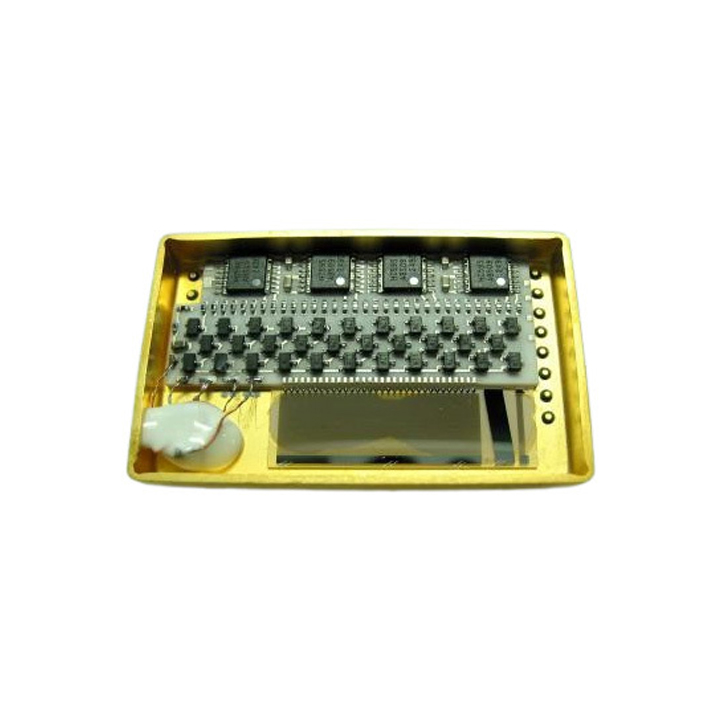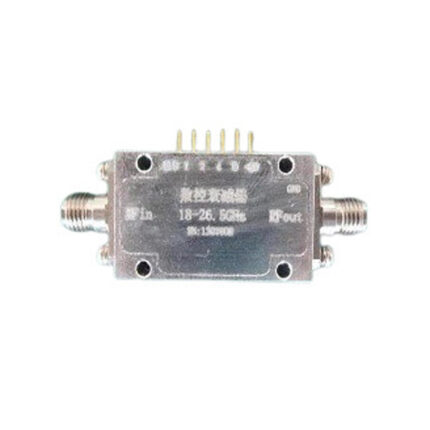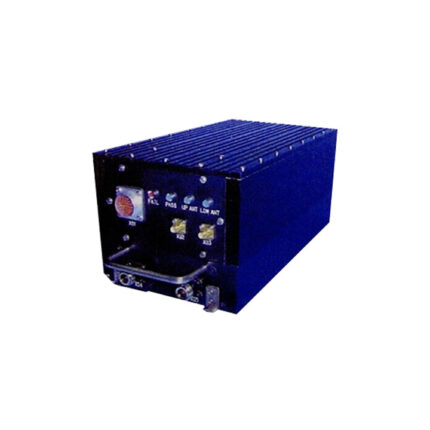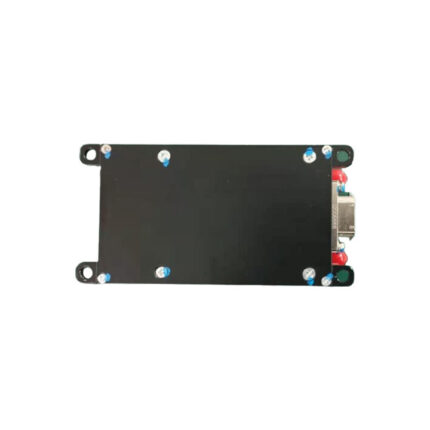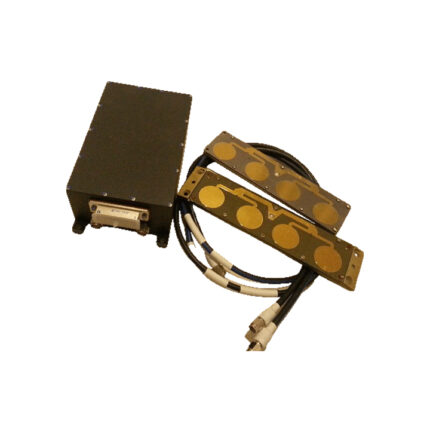Correlator
Supported by its experienced microwave team, process team, and management team, Hangtai Technology has been making consistent progress in enhancing the R&D and production capabilities of microwave components. The microwave components developed by this division are not only able to meet the needs of the company’s radar and radio altimeter projects but also can be put into use to serve the broader society.
Related products
MDG-100 Radio Height Setting Device
The MDG-100 radio altimeter operates in the C-band and adopts a pulse Doppler working system. Its sensitive device is of the heterodyne type, and the circulator at the antenna terminal uses a transceiver common-mode design. With mature technology, this altimeter is installed on missiles and serves as a control component for altitude fuzes. It features capabilities such as high burst altitude, strong adaptability to high falling speeds, and excellent performance in resisting ground clutter and sea clutter. Additionally, it employs pseudo-random pulse modulation technology: the pulse period varies randomly within a specified range, making it difficult for jammers to identify the initial modulation pulse of the fuze signal and further predict the delayed pulse. This design effectively enhances the altimeter’s resistance to active interference.
Radio Altimeter MY-3001M
The MY-3001m radio altimeter is a radar altimeter developed for the Rainbow XX UAV by a specific institute. It is widely used in UAVs to measure the altitude relative to the sea surface or the ground. This altimeter incorporates a linear modulation coefficient technology adaptable to altitude changes and a narrow-band receiving technology for echo signals, which enhances the product’s resistance to active interference. It also adopts coherent local oscillator mixing, delivering superior performance in resisting synchronous interference, and employs echo signal spectrum front-edge detection technology to improve tracking accuracy. Additionally, it features a three-dimensional design based on serialization, standardization, and modularization, endowing the product with excellent inheritance, maturity, and reliability. While retaining the closed-loop tracking system, the MY-3001m radio altimeter further adopts digital control technology, microwave integration technology, and hybrid integration technology to achieve product modularization. Moreover, its receiver is equipped with dual filters, which further boosts the product’s anti-interference capability.
MDG-300 Radio Altimeter
The MDG-300 radio height-fixing device operates in the C-band and adopts a pulse compression system. Its sensitive component is of the heterodyne type, and the circulator at the antenna terminal uses a transceiver common-mode design. Prior to missile launch, the height-fixing device is powered on, and it undergoes self-check and height presetting via the communication interface. After the missile is launched, the radio frequency (RF) module is activated, and a gate is set in accordance with the preset height. When the preset height is reached, the device outputs height-fixing command information and telemetry data. The MDG-300 height-fixing device features mature technology: its pulse compression technology can enhance the altimeter’s height measurement performance, and it has the characteristic of a wide height measurement range. Additionally, the digital pulse compression function based on FPGA (Field-Programmable Gate Array) endows it with advantages such as small size, low power consumption, and low cost.
MDG-400 Radio Altimeter
The MDG-400 radio altimeter operates in the C-band and adopts a frequency-modulated continuous wave (FMCW) working system, with its antenna utilizing a transmit-receive separation mode. Prior to missile launch, the altimeter (serving as the height-fixing device) is powered on, and it undergoes self-check and height presetting via the communication interface. After the missile is launched, the radio frequency (RF) module is activated, and frequency variation parameters are set based on the preset height. When the preset height is achieved, the altimeter outputs height-fixing command information and telemetry data. The MDG-400 altimeter features mature technology; its adoption of frequency-modulated continuous wave (FMCW) technology endows it with the advantages of compact size and a large height measurement range.
MASS-10 Universal Echo Precision Delay Module (Miniature Universal Continuous Simulation)
The MASS-10 Universal Echo Precision Delay Module, featuring a miniature design and universal continuous simulation capability, is a high-performance component tailored for precise echo signal delay control in radio frequency (RF) testing scenarios. It excels in providing accurate, adjustable delay for echo signals across a wide range of frequencies, making it applicable to various devices like radio altimeters, radars, and other RF-based systems that require reliable echo signal simulation. With its compact size, the module is easy to integrate into limited-space test setups, while the universal continuous simulation function ensures it can replicate diverse real-world signal delay conditions consistently. This module plays a crucial role in verifying the performance of target devices—such as testing their ability to accurately capture and process delayed echo signals—thereby supporting the development, calibration, and quality assurance of RF equipment with high precision and flexibility.
MY-5001B Radio Altimeter for Sea Condition Identification
The MY-5001B radio altimeter is an all-solid-state C-band device featuring a frequency-modulated continuous wave (FM-CW) system, a constant differential beat frequency, and a closed-loop tracking and measurement mechanism. It ensures a constant beat frequency through servo control of the slope of the sawtooth wave that modulates the microwave oscillator, thereby achieving automatic height tracking. This altimeter incorporates a suite of advanced technologies, including narrowband reception, weighted frequency discrimination, equivalent spectrum leading edge detection, gain PID control, instantaneous sensitivity compensation, temperature compensation, horizon frequency selection design, and power silence. These technologies collectively endow it with advantages such as accurate height measurement, stable tracking, adaptability to various terrains, a wide height measurement range, high precision, and strong anti-interference capabilities.
Small Radio Altimeter MY-28A、MY-24(XXX-28A、XXX-24)
The MY-28A and MY-24 (also designated as XXX-28A and XXX-24) are miniaturized C-band full-function radio altimeters that comply with aerospace standards. Serving as key components for the control of the longitudinal altitude channel, they are specifically designed for a certain type of UAV target. These altimeters possess excellent anti-interference performance and electromagnetic compatibility, enabling them to accurately measure altitude relative to the sea surface or the ground.
The MY-28A and MY-24 are developed following the three core design principles of serialization, standardization, and modularization. This design approach endows the products with strong design inheritance, ensuring they are mature and reliable in operation. To date, these two models of radio altimeters have been widely applied in multiple types of aircraft, with their total deployment quantity exceeding 800 units.
Full Function Radio Altimeter MMK-4
The MMK-4 altimeter is a full-function radio altimeter that meets aerospace standards; serving as a key component for longitudinal altitude channel control, it can be widely applied in cruise missiles and aircraft to measure altitude relative to the sea or ground. The MMK-4 adopts linear modulation coefficient technology adaptive to height changes and echo signal narrow-band receiving technology to enhance the product’s resistance to active interference, uses coherent local oscillator mixing to achieve superior performance in resisting co-frequency asynchronous interference, employs echo signal spectrum front detection technology to improve tracking accuracy, and follows the design principles of serialization, standardization, and modularization—endowing it with good product inheritance, maturity, and reliability.

